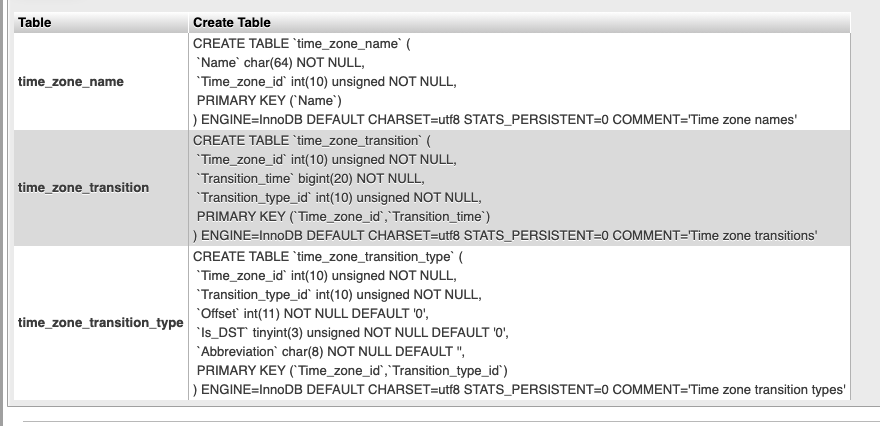Everything You Need to Know About Phpmyadmin Show Create Table
If you’re a developer or someone who works with databases, you’ve probably heard about Phpmyadmin Show Create Table. But what exactly does it do?
Phpmyadmin is a free and open-source tool that is used to manage MySQL and MariaDB databases. It provides an easy-to-use interface for performing various database operations. One of the most useful features of Phpmyadmin is the ability to view the SQL query used to create a table in a database.
When you use Phpmyadmin to display the create table query for a particular table, you get a detailed breakdown of the table structure. This can be extremely helpful when you need to recreate the table or make modifications to its schema.
So, how do you use Phpmyadmin Show Create Table? It’s actually quite simple. Here’s a step-by-step guide:
- Start by logging into Phpmyadmin and selecting the database that contains the table you want to view.
- Click on the table name to open its structure view.
- At the top of the page, you’ll see a row of tabs. Click on the “SQL” tab.
- You will now see the SQL query used to create the table. This query includes all the column definitions, constraints, indexes, and other details.
By using the Phpmyadmin Show Create Table feature, you can easily understand the structure of a table without having to manually write the SQL query yourself. This can save you time and reduce the chances of errors.
Furthermore, Phpmyadmin allows you to copy the create table query directly from the interface. This means you can quickly replicate the table structure in another database or editor.
Overall, Phpmyadmin Show Create Table is a powerful tool that can help you work more efficiently with databases. Whether you’re a beginner or a seasoned pro, knowing how to use this feature can make your life a whole lot easier.
So next time you’re working with databases, don’t forget to take advantage of Phpmyadmin Show Create Table. It’s a simple yet effective way to access important information about your database tables.
Happy coding!
